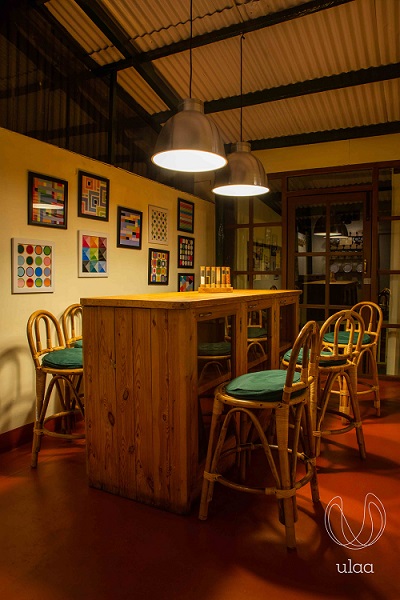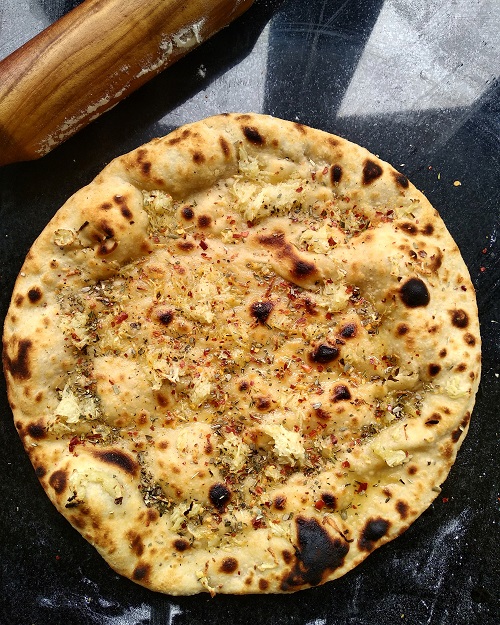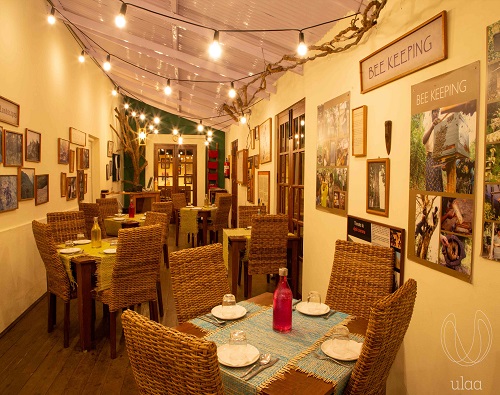Supporting indigenous communities while giving you the right kind of products.
The blue mountains are a visual treat and a preferred holiday destination. But beyond that, they are also home to many indigenous communities and a treasure trove of flora and fauna. It has been reported that there are about 2700 plant species in this region which are of medicinal value. Last Forest, a social enterprise from this massif, incubated by the Keystone Foundation brings you the best of the blue mountains while ensuring a better life for the communities within.
From wild honey to organic jaggery to exotic products like ‘Organic Amla Cider Vinegar,’ Last Forest gives you a range of environment-friendly options to choose from. The enterprise also works with farmers, beekeepers, honey hunters and local artisans giving them sustainable incomes and better market opportunities. The enterprise reinvests 30% of the profits earned in community development related projects.
In 2015 Last Forest set up Place To Bee, a restaurant that promotes the principles of the Slow Food Movement. Located at their Bee Museum in Ooty, ‘Place to Bee’ gives Italian dishes a local twist. Over a phone call, I spoke to Aritra Bose, Senior Manager at Last Forest and Manager of Place to Bee about all things local, delicious and definitely not last.
TYT: Could you tell me a little bit about the genesis of Last Forest?
Aritra: I will begin with the Keystone Foundation. The Foundation was set up 25 years ago. We recently celebrated the completion of 25 years. When it started, the focus was on honey hunters and the Giant Honey Bee known as Apis dorsata. Keystone started working with indigenous communities here in the Nilgiris. Slowly the Foundation began work addressing livelihood and conservation aspects for these community members. Since the beginning, there was always this idea to create value-adds for all the products coming from the forests. These are called NTFP which stands for Non-Timber Forest Produce. As a result, eight years ago we set up the social enterprise Last Forest to give these products the right markets. We are a fair trade organization promoting organic agriculture through the Participatory Guarantee System (PGS) for small farmers. We are also catering to small cooperatives and groups across the country who do not have the marketing strength. We help them by providing access through Last Forest.
TYT: What communities does Last Forest work with?
Aritra: The communities in the Nilgiri Biosphere Reserve. We work with mainly four communities- the Kurumbas and the Irulas who are honey hunters. Then you have the Todas- they are mainly herders, who herd and tend to native buffalo species. They are also weavers. The Toda embroidery has a geographical indication tag. The last community we work with are the Kotas who are mainly potters.

TYT: As you mentioned the Keystone journey began with the honey hunters. How have things changed for this community over the years?
Aritra: Even today they stick to their traditional methods of honey gathering. What Keystone as an organization is working towards is to save this knowledge, and pass it on to the younger generations in these communities. The attempt has been to make them understand how these methods are a result of vast knowledge gained over generations. Every year around March, wherever they are, members of the community come back for the honey hunting season. It is like a ritual for them with prayers offered before harvesting begins. They always practice sustainable harvesting. If there are 8-10 hives, they will harvest about seven and leave the rest. When the bees come back, they can regenerate these hives. They also believe there are hills that should not be touched. They consider them sacred. What people don’t understand is because of these specific practices, they are preserving gene pools. They may not articulate it the same way, but that is how they protect species and contribute to conservation.
Social enterprise #LastForest on natural products, food that is good for the environment and people who grow it. #keystonefoundation #placetobee Click To TweetTYT: Place To Bee, the restaurant was founded in 2015. How did the concept of a restaurant come into the picture?
Aritra: The Bee Museum, first of its kind in India, was set up in 2007. After seven years we thought we should probably create a more open space for people who visit the museum and visit the hill station. A place where people can just relax, hence the name- “Place To Bee”.
At the same time, the restaurant also gave us the opportunity to promote the values of the Slow Food movement. We wanted people to understand the importance of food in our lives beyond the context of eating and nutrition. We still have posters about bees and pollination in the restaurant, to make that connection obvious. If there is no pollination, there is no food. So the museum and this restaurant came together as a place to talk about the concepts of local food, biodiversity and understanding where our food comes from.

Image Credit: Ulaa
TYT: How does the food at ‘Place to Bee’ reflect the Last Forest ideologies?
Aritra: Place To Bee is primarily an Italian restaurant. Here, we strive to use local ingredients, organic ingredients and wild produce from the forest. For example, pizza is a fast food. But we make the base using organic whole wheat. The tomato sauce is made in-house, and the vegetables and the tomatoes come from organic farmers. We also have our own kitchen garden, and a lot of the vegetables come from there. The chicken wings that we serve, its honey glazed and served with a mustard sauce. The chicken itself is country chicken or ‘nata kozhi’, the honey is wild collected, and the mustard is a tribal mustard.
Another example is the ‘butter garlic rice’ where we use red rice from the Timbaktu Collective. These are ways in which we create dishes that support local farmers, the local environment and the local biodiversity. This how we try to bring our ideas onto the plate. Over the years we have converted 60-70% of our ingredients to organic, wild or local.

Image Credit: Aritra Bose
TYT: How do you address the issue of food waste through the restaurant?
Aritra: Something that we have been doing for the last two years is following this event called the World Disco Soup Day. The idea is to raise awareness about food waste. When vegetable shops in Ooty are shutting down for the day, we go to them and ask them what are the vegetables they plan to throw away. They usually have a variety of vegetables, few kilos of each. We bring it back with us and segregate them. What we find is that these vegetables are usually rejected for aesthetic reasons – they are either misshapen or don’t look brightly coloured, but they are definitely good. We clean them up nicely and make soup with them. We give this soup for free. This soup opens up the dialogue on food waste and how these perfectly good vegetables would have gone to waste in a normal situation.
We also have a local farmer who comes and picks up our restaurant vegetable waste- the peels and the unused parts. He uses them to make a manure for his farm.
We make most of our sauces and condiments in house- the sundried tomatoes, tahini sauce, tzatziki sauce, garlic mayonnaise. They have to be consumed in a shorter time because they are freshly made. So our menu is flexible and ever-evolving to incorporate local produce and what we make, thus reducing the carbon footprint and the amount of waste generated.

Image Credit: Aritra Bose
TYT: And your plans ahead?
Aritra: The Disco Soup event has become quite popular and we see that customers want to pitch in. So we are planning to have our own version of it on the last weekend of every month. It need not be soup, any dish which could highlight the value of rescued vegetables and open people’s eyes to food waste.
We also work with school students from a few schools in Ooty. We teach them the basics of food preparation, of where the food comes from and about the farmers involved.
But one of our larger goals is to raise awareness towards local and traditional foods. We want to work with chefs who have an equal interest in highlighting local flavours. We are currently working with a chef from Nagaland. This way we can create unique dishes which people would like to try out. When it comes to food, you have to have a good recipe to back your principles. That is the best way to convey it all.
For more information visit Last Forest, and follow ‘Place to Bee’ on Instagram to see what’s cooking.
Featured Image Credit: Ulaa
All Images Courtesy: Last Forest
You May Also Like.
Not all things bright and beautiful: A toast to wonky vegetables
